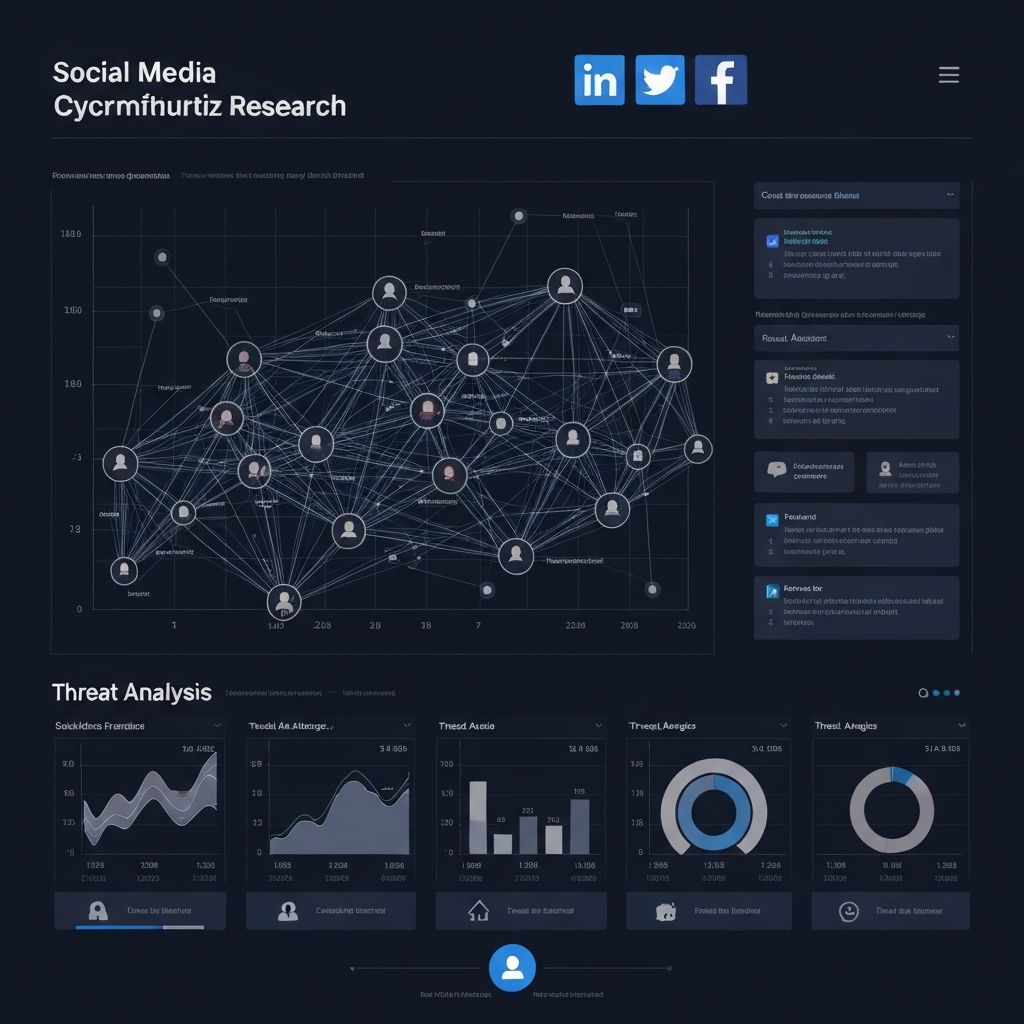
Social Media Cybersecurity Research
Research project analyzing cybercriminal activities across social media platforms with comprehensive security recommendations.
Project Goal
Conduct a comprehensive qualitative study to understand user awareness and behaviors regarding cybersecurity threats on social media platforms, specifically TikTok and Facebook.
Overview
This research project involved interviewing over 100 active TikTok and Facebook users to assess their understanding of social media security threats, privacy concerns, and protective behaviors. The study aimed to identify knowledge gaps and develop actionable recommendations for improving cyber-awareness among social media users.
Problem
Social media platforms have become primary targets for cybercriminals, yet user awareness of security threats remains critically low. Many users unknowingly engage in risky behaviors that expose them to phishing, identity theft, account takeovers, and other cyber attacks.
My Role
Lead Researcher & Cybersecurity Analyst - Designed the research methodology, conducted user interviews, analyzed qualitative data, identified security awareness patterns, and developed comprehensive recommendations for users and platform providers.
Research Methods
- ▸Semi-structured interviews with 100+ TikTok and Facebook users
- ▸Qualitative data analysis using thematic coding
- ▸User behavior observation and pattern identification
- ▸Threat landscape analysis across social media platforms
- ▸Literature review of existing social media security research
- ▸Cross-platform security comparison studies
Key Topics Studied
- ▸Phishing and social engineering attacks on social media
- ▸Privacy settings awareness and configuration
- ▸Account security practices (passwords, 2FA, recovery options)
- ▸Recognition of fake accounts and impersonation attempts
- ▸Malicious link identification and safe browsing habits
- ▸Data sharing behaviors and privacy implications
- ▸Awareness of platform-specific security features
- ▸Response to suspicious messages and friend requests
Tools Used
Key Findings
- ▸78% of users were unaware of basic phishing indicators on social media platforms
- ▸Only 23% of participants used two-factor authentication on their social media accounts
- ▸65% of users accepted friend requests from unknown profiles without verification
- ▸89% of participants had never reviewed or adjusted their privacy settings after initial setup
- ▸42% of users clicked on suspicious links from friends' accounts without questioning authenticity
- ▸71% were unaware that their public posts could be used for social engineering attacks
- ▸Only 15% could correctly identify all signs of a compromised account
Impact & Results
- ▸Identified critical gaps in social media security awareness among everyday users
- ▸Developed evidence-based recommendations adopted by university IT security programs
- ▸Created user-friendly security guidelines distributed to 500+ social media users
- ▸Informed the development of targeted security awareness campaigns
- ▸Contributed to academic understanding of social media threat perceptions
- ▸Provided actionable insights for improving platform security education
- ▸Highlighted the need for better default security settings on social platforms